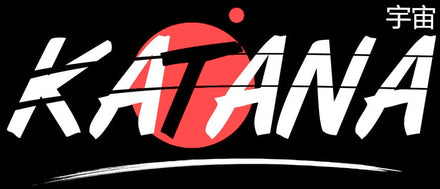Perhaps you have already heard of the Iaitō? You might even be familiar with its connection to Iaido. But do you know how and why this weapon was born? What is its purpose? What are its characteristics? Let's answer all these questions for you.
What is Iaitō?

Iaitō or 居合刀 is a training weapon. Originating from Japan, it resembles a katana and is used by all schools for practicing martial arts, such as Iaido and Iaijutsu. When this imitation of a Japanese sword is not intended for martial arts practice, the Japanese refer to it as mogitō or 模擬刀, which means imitation sword.
Iaitō also refers to any sword used for Iaido practice. In Japan, the production of iaitō is primarily concentrated in the Gifu province. Historically, this region was home to a traditional forging school, the Mino school. Moreover, it offers the best quality of magnolia wood, which is used for the scabbard (saya) and the handle (tsuka). The iaitō is mainly balanced towards the handle or tsuka, whereas traditional sharp swords are usually balanced towards the tip or kissaki. However, the balance can be modified during manufacturing, especially for performing suburi, which means cuts in the void.
Origin of Iaitō

Contrary to what one might think, the Iaitō is a relatively recent creation. This instrument emerged due to laws enacted in 1958 as part of the pacifist policy pursued by the Japanese government. The legislation not only prohibited carrying and transporting weapons but even considered a simple kitchen knife as a weapon. Furthermore, the production of bladed weapons became heavily regulated and restricted. Consequently, making machetes and steel swords was also prohibited. Even a blade that could be transformed into a sharp weapon through minor modifications became forbidden. As a result, the production of non-sharp steel swords became impossible, as a simple grindstone could turn them into sharp weapons. Only katanas were exempt from this ban as they were considered part of Japan's cultural heritage.
Therefore, Iaido practitioners had to adapt to continue their training. The solution was the creation of an Iaitō with a non-sharpenable alloy blade. This alloy, most of the time, consists of a mixture of aluminum and zinc, commonly known as zicral. It is a lightweight alloy, less dense than the steel used in a katana's blade. The Iaitō's blade remains unsharpened, making it safer to handle. Apart from the blade, the other parts are similar to those used in real swords.
Composition of an Iaitō

The Iaitō has metallic components similar to those found in katanas. These components are called kanagu, which include the tsuba (guard) and menuki (decorative pieces on the handle). It also has fuchi and kashira, which reinforce the handle and the pommel. Of course, the main part is the non-sharpenable aluminum alloy blade. It is accompanied by a tsuka with its wrapping and a magnolia wood saya with a lacquered finish. On the blade's edge, there is a visually similar hamon to that of a katana. However, while a katana's hamon is achieved through selective tempering, the Iaitō's hamon is the result of polishing work.
From reading this article, you may have understood that the Iaitō was born out of the necessity to adapt to strict legislation. The Japanese managed to transform it into a complete training weapon, reflecting the essence of the Japanese spirit and refinement. It is not only an essential tool for practicing certain martial arts but also proof that constraints can lead to the creation of an indispensable accessory.















